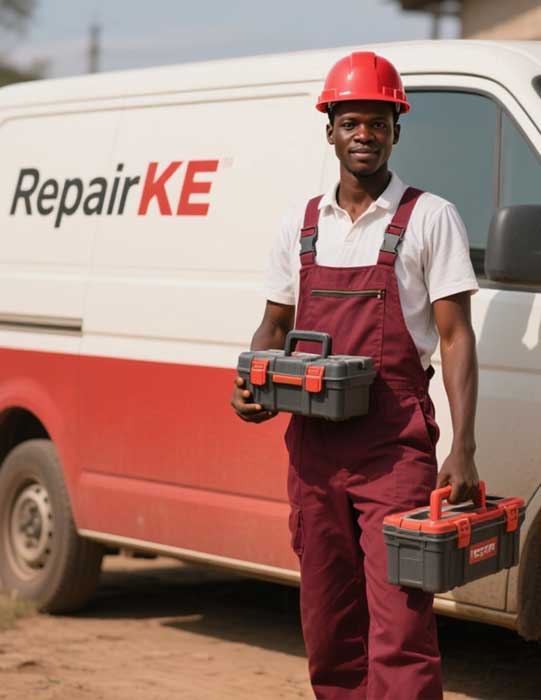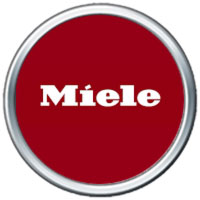
Dishwasher Problems and Their Repair Solutions
Dishwashers are essential appliances in modern kitchens, saving time and effort in cleaning dishes. However, like any machine, they can encounter issues that disrupt their performance. Below is a comprehensive list of common dishwasher problems, their potential causes, and practical repair solutions to help you troubleshoot and restore your appliance to optimal functionality.
1. Dishwasher Not Starting
Problem Description
The dishwasher does not power on or respond when you press the start button, leaving you with a pile of dirty dishes.
Potential Causes
- Power Supply Issues: Loose plug, tripped circuit breaker, or blown fuse.
- Door Latch Malfunction: The door isn’t securely closed, or the latch is faulty.
- Control Panel Failure: Defective buttons or internal wiring issues.
Repair Solutions
- Check Power Supply: Ensure the dishwasher is plugged in securely. Verify the circuit breaker hasn’t tripped and replace any blown fuses.
- Inspect Door Latch: Close the door firmly. If the latch is broken, replace it following the manufacturer’s instructions (typically costs $10–$30 for a replacement part).
- Test Control Panel: If the panel is unresponsive, consult a technician to diagnose potential circuit board issues, which may require professional repair or replacement ($100–$300).
2. Dishes Not Getting Clean
Problem Description
Dishes come out with food residue, grease, or spots, even after a full cycle.
Potential Causes
- Clogged Spray Arms: Food debris or mineral buildup blocking water jets.
- Improper Loading: Dishes are overcrowded, obstructing water flow.
- Low Water Pressure or Temperature: Insufficient water or heat to clean effectively.
- Detergent Issues: Old, clumped, or low-quality detergent.
Repair Solutions
- Clean Spray Arms: Remove the spray arms (usually detachable) and clear blockages with a toothpick or small brush. Rinse thoroughly before reattaching.
- Rearrange Dishes: Follow the manufacturer’s loading guidelines, ensuring dishes don’t block spray arms or overlap excessively.
- Check Water Conditions: Ensure the water heater is set to 120°F (49°C) and verify water pressure (consult a plumber if needed). Run hot water at the sink before starting the dishwasher to improve water temperature.
- Use Fresh Detergent: Replace old or low-quality detergent with a high-quality brand and store it in a dry place. Consider adding a rinse aid to reduce spotting.
3. Dishwasher Not Draining
Problem Description
Water pools at the bottom of the dishwasher after a cycle, leaving dishes wet and dirty.
Potential Causes
- Clogged Drain or Filter: Food particles or grease blocking the drain system.
- Kinked Drain Hose: Hose is bent or improperly installed.
- Faulty Drain Pump: Pump is obstructed or malfunctioning.
Repair Solutions
- Clean Drain and Filter: Remove and clean the filter (usually located at the bottom of the dishwasher) with warm, soapy water. Check the drain for debris and clear it using a plunger or drain snake.
- Inspect Drain Hose: Ensure the hose is free of kinks and properly connected. Replace a damaged hose ($10–$20).
- Test Drain Pump: Listen for a humming sound when the pump activates. If it’s silent or clogged, remove debris or replace the pump ($50–$150). Consult a professional for complex pump repairs.
4. Dishwasher Leaking
Problem Description
Water leaks from the door, bottom, or sides of the dishwasher, potentially damaging your kitchen floor.
Potential Causes
- Worn Door Gasket: Cracked or loose rubber seal around the door.
- Damaged Tub: Cracks or corrosion in the dishwasher tub.
- Loose Connections: Faulty water inlet valve or hose connections.
Repair Solutions
- Replace Door Gasket: Inspect the rubber seal for cracks or debris. Clean it with a damp cloth or replace it ($15–$40) if damaged. Ensure proper alignment during installation.
- Examine Tub: Check for cracks or rust. Small cracks can be patched with a dishwasher-safe sealant, but a severely damaged tub may require replacement or professional repair.
- Tighten Connections: Inspect the water inlet valve and hoses for leaks. Tighten loose connections or replace faulty components ($20–$50). Turn off the water supply before attempting repairs.
5. Dishwasher Making Unusual Noises
Problem Description
The dishwasher produces grinding, buzzing, or rattling noises during operation, indicating a mechanical issue.
Potential Causes
- Loose or Broken Parts: Spray arms, racks, or other components are loose.
- Debris in Pump: Food or glass fragments caught in the pump or impeller.
- Worn Motor Bearings: Aging motor causing grinding sounds.
Repair Solutions
- Secure Loose Parts: Tighten or reposition spray arms and racks. Replace damaged components if necessary.
- Clear Pump Debris: Access the pump (consult the manual) and remove foreign objects like glass or bones. Wear gloves to avoid injury.
- Inspect Motor: If the noise persists, the motor bearings may be worn. Motor replacement ($150–$400) is complex and often requires a technician.
6. Dishwasher Not Drying Dishes
Problem Description
Dishes remain wet after the drying cycle, requiring manual towel-drying.
Potential Causes
- Disabled Heated Dry Option: Heated drying is turned off.
- Faulty Heating Element: Element is broken or malfunctioning.
- Rinse Aid Issues: Empty or low rinse aid dispenser.
Repair Solutions
- Enable Heated Dry: Check the control panel and activate the heated dry setting if available.
- Test Heating Element: Use a multimeter to check the element’s continuity. Replace a faulty element ($20–$50) following safety precautions (unplug the dishwasher first).
- Refill Rinse Aid: Fill the rinse aid dispenser with a quality product to improve drying performance. Check monthly to ensure it’s not empty.
7. Dishwasher Smells Bad
Problem Description
A foul odor emanates from the dishwasher, affecting dishes and the kitchen environment.
Potential Causes
- Food Residue: Trapped food in filters, spray arms, or crevices.
- Mold or Mildew: Moisture buildup fostering mold growth.
- Clogged Drain: Stagnant water causing bacterial growth.
Repair Solutions
- Clean Interior: Remove and clean filters, spray arms, and crevices with a brush and soapy water. Run a cycle with a dishwasher cleaner ($5–$15) monthly.
- Prevent Mold: Leave the door ajar after cycles to promote drying and reduce moisture. Wipe down seals regularly.
- Clear Drain: Run a cycle with a cup of white vinegar in a bowl on the top rack to deodorize and clear minor drain clogs.
Preventive Maintenance Tips
To minimize dishwasher problems:
- Regular Cleaning: Clean filters, spray arms, and seals monthly.
- Proper Loading: Avoid overloading and follow loading guidelines.
- Use Quality Products: Opt for high-quality detergents and rinse aids.
- Annual Inspections: Check hoses, gaskets, and connections for wear and tear.
When to Call a Professional
While many dishwasher issues can be resolved with DIY solutions, certain problems—like electrical faults, complex motor repairs, or persistent leaks—may require professional expertise. If troubleshooting doesn’t resolve the issue or you’re uncomfortable performing repairs, contact a certified technician to avoid further damage or safety risks.
By addressing these common dishwasher problems promptly and maintaining your appliance regularly, you can extend its lifespan and ensure consistently clean dishes. If your dishwasher is beyond repair, consider replacing it with an energy-efficient model to save water and electricity in the long run.




